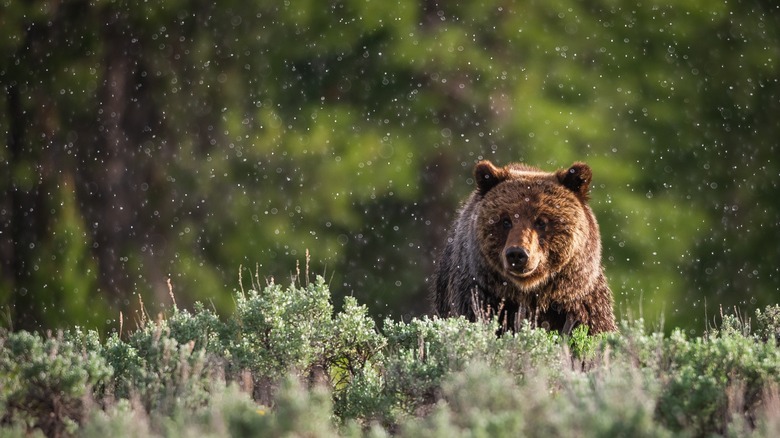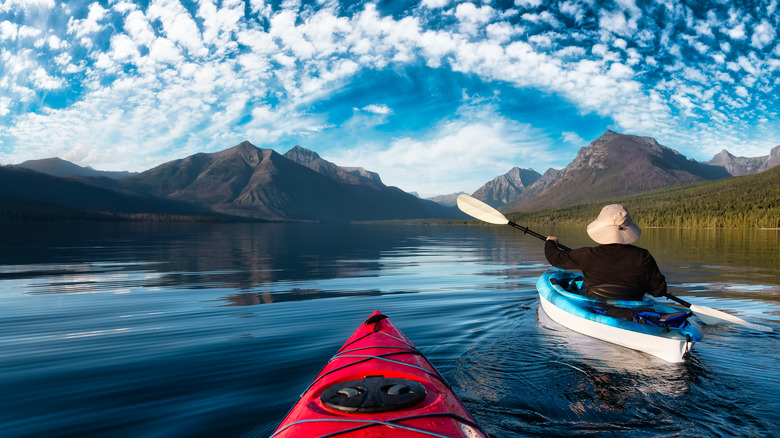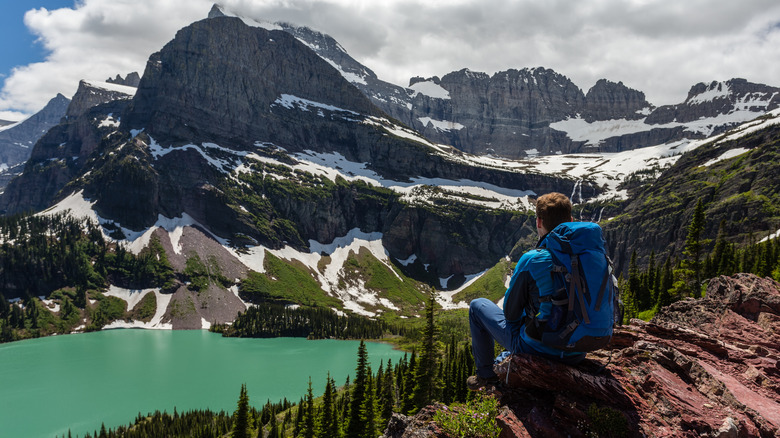During a visit to Glacier National Park, you’ll weave past flowing streams and small glaciers, hike through open meadows and wooded valleys, and conquer the summits of several mountains. It is breathtakingly beautiful, but potential encounters with bears while hiking, freezing waters, and steep climbs make it arguably one of the most dangerous national parks in America.
Though Glacier National Park is a popular destination among outdoorsy travelers, you are also entering unbridled wilderness — and bear country. “The beauty and the reward of enjoying nature is having that freedom to enjoy the wilderness,” Sara Newman, acting chief of the National Park Service’s Office of Risk Management, told The Great Falls Tribune in 2015. “It’s not risk free to come to a [national] park like it really is in Disney World.”
Encompassing 1,012,837 acres of Montana’s northwestern wildlands, Glacier National Park offers over 700 miles of trails and more than 720 lakes, some of which allow swimming, boating, or other water activities. Bears may be the first animals that come to mind when many people think about the park, but it is home to abundant wildlife. Bighorn sheep, mountain goats, moose, elk, mountain lions, and beavers are just a few mammals native to the vibrant landscape. Before diving headfirst into your Montana adventure, there are a few things you should know to keep you safe.
The bears at Glacier National Park

Glacier National Park is infamous for its bear attacks, but they aren’t as common as you may believe. In fact, there have only been 10 fatal bear attacks recorded in the park since 1967. However, a number of park visitors have been severely injured by bears throughout the years. The most well-known fatal bear attacks that occurred in Glacier National Park happened in 1967 when two grizzlies, in different areas of the park, killed two women.
Despite what some films may suggest, you are not a prized menu item for grizzly bears (or any bear species). By and large, these massive mammals are shy omnivores that love to snack on fruits and plants in the park’s meadows, actively avoiding humans. Just like most people, bears love their personal space and may get aggressive if you try to approach them — especially mama bears protecting their cubs and males.
In a nature-abundant place like Glacier National Park, that’s also filled with trails and campgrounds, it’s impossible to completely avoid the occasional interaction with these animals. If you happen to see a bear while hiking, backing away slowly, avoiding direct eye contact, letting the bear pass, and making noises can decrease your chance of ending up in a dire situation. Packing bear spray is also a necessity, as it is an effective deterrent. When backpacking in grizzly territory, be sure to safely pack your food to avoid attracting bears to your campsite overnight.
The real dangers to consider when visiting Glacier National Park

While the bears of Glacier National Park may get a bad rap, it’s largely undeserved. With its hundreds of lakes, rivers, and swift gorges, drowning and water-related fatalities top the list of causes of death in the national park. Glacier National Park’s lakes and creeks stay frigid all-year-round, increasing the risk of hypothermia.
The other top two reasons for fatalities in Glacier National Park include natural causes such as heart attacks and falls that occur while climbing or hiking. Many of the park’s paths can become dangerously icy or slippery depending on the season, and there are over 40 active avalanche paths that border the popular Going-to-the-Sun Road. Plus bears are not the only kind of wildlife that you should be aware of when exploring this beautiful destination; there have been a number of nerve-wracking close encounters with park guests involving moose and mountain lions.
Wildlife viewing should always be done from the safety of your car or from a distance with a pair of binoculars — and the animals that live in the park should be respected. What’s more, hikers should always stay on the marked paths, and solo travelers should opt to participate in ranger-led activities. If you plan to participate in water activities, bring along a life jacket and prepare for the weather conditions. Though there are notable dangers at Glacier National Park, many of the risks can be mitigated by adhering to basic precautions.

